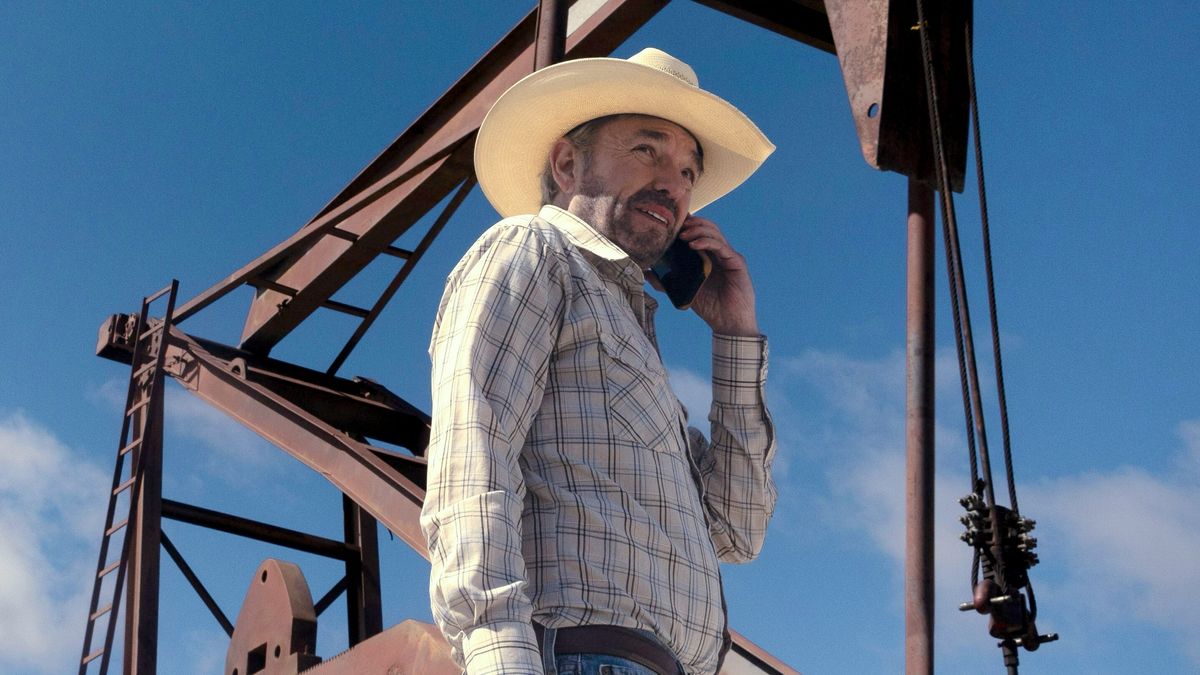
It’s Musicals Week at IndieWire. With “Wicked” about to sparkle over theaters, we’re celebrating the best of the movie-musical genre.
Bob Fosse only directed five features — “Sweet Charity,” “Cabaret,” “Lenny,” “All That Jazz,” and “Star 80” — but among filmmakers and cinephiles, his legend looms large in proportion to the abundance of his output. David Fincher, for example, frequently references Fosse as an influence alongside and equal to far more prolific directors like Steven Spielberg, William Friedkin, and John Carpenter. In “A Personal Journey with Martin Scorsese Through American Movies,” Fosse is one of only a few post-classical studio era auteurs (alongside Stanley Kubrick and Clint Eastwood) that Scorsese deems worthy of inclusion alongside old masters like Orson Welles and Sam Fuller.


By only making a handful of movies in between stints revolutionizing American musical theater on Broadway, Fosse maintained a consistency any director would envy — he’s five for five when it comes to cranking out masterpieces. Yet his reputation these days mostly rests on the greatness of one exceptional movie, a movie that Kubrick once called the best film he had ever seen: 1979’s “All That Jazz.”
“All That Jazz” is both singular among Fosse’s films and an exploration of an idea that runs through all of them: Show business kills. For a guy who found all of his success and fulfillment in entertainment — he’s the only person ever to win an Oscar, a Tony, and an Emmy all in the same year — Fosse sure had mixed feelings about it.
From “Lenny” on (spoiler alert), every one of his films ends with the death of the protagonist, and the characters in “Sweet Charity” and “Cabaret” don’t come out all that well either. At one point in “All That Jazz,” choreographer, director, and Fosse surrogate Joe Gideon (Roy Scheider) says, “I hate show business,” only to be reminded by his girlfriend, “You love show business.” Both ideas are true in every one of the film’s 123 minutes — right up until Joe is zipped up in a body bag to the tune of Ethel Merman singing “There’s No Business Like Show Business” in the final shot.
 ‘All That Jazz’©20thCentFox/Courtesy Everett Collection
‘All That Jazz’©20thCentFox/Courtesy Everett CollectionIt’s always been fashionable to glibly refer to “All That Jazz” as a musical about open heart surgery, a description that’s accurate but absurdly insufficient in summing up the film’s originality and power. What makes the movie distinctive isn’t its preoccupation with death or even its dark tone in general; other film musicals — most famously Michael Powell and Emeric Pressburger’s “The Red Shoes” — have culminated in the demise of their protagonist, and even a superficially lightweight confection like Stanley Donen and Gene Kelly’s “It’s Always Fair Weather” is permeated by melancholia and cynicism.
Where “All That Jazz” distinguishes itself from virtually every other musical ever made is its use of song and dance to express emotion and theme and its creator’s insecurities, cruelty, contradictions, and self-absorption with no filter and no mercy. To call it autobiographical is like calling “Psycho” a movie about a guy with a few mother issues. “All That Jazz” is so nakedly exposing of its writer-director’s neuroses — and so filled with obvious references to his real-life work and relationships — that it makes “8 1/2” and “Stardust Memories” look withholding and complacent.
Fosse does nothing to cloak the parallels between himself and Gideon, who suffers a heart attack while simultaneously directing a Broadway show and editing a new movie, just as Fosse did when he was in post on “Lenny” and rehearsals for “Chicago.” In “All That Jazz,” “Lenny” becomes “The Stand-Up” and “Chicago” becomes “NY/LA” — and Fosse’s long-suffering wife and muse Gwen Verdon becomes Audrey Paris (Leland Palmer), his real-life girlfriend Ann Reinking becomes Gideon’s girlfriend Kate Jagger, “Pippin” dancer Jennifer Nairn-Smith becomes “NY/LA” dancer Victoria Porter, and so on.
The film is filled with so many direct allusions to Fosse’s life and work that cataloging all of them here would be exhausting for both writer and reader. Even in the film’s many fantasy sequences, there are playful — and sometimes ominous — connections to Fosse’s life; the angel of death character he conjures into being throughout the film is played by another of Fosse’s real-life lovers, Jessica Lange.
 ‘All That Jazz’©20thCentFox/Courtesy Everett Collection
‘All That Jazz’©20thCentFox/Courtesy Everett CollectionThe dense network of obvious and subtle references makes “All That Jazz” a fun game for Fosse enthusiasts. They’ve spent the 45 years since the movie’s release excavating the clues to determine what Fosse is really saying about himself, his relationships, his art, and the connection between all three.
Part of the fun comes from the question of how much Fosse is really revealing — is it possible that the obviousness of the connections between him and Gideon is a smokescreen, a way of hiding the fact that the whole movie is really bullshit? After all, Gideon is established as a relentless liar and manipulator — if he is Fosse, is Fosse lying to and manipulating us? Yet if he’s lying about being Gideon and thus not Gideon, where does that leave us?
Well, first of all, it leaves us with several of the greatest musical numbers in the history of cinema, starting with an extraordinary 10-minute sequence that establishes a number of things about Joe Gideon while plunging us into his world. After briefly introducing a motif that will return several times in the movie (Gideon waking up to a shower and some Dexedrine to get him going in the morning), Fosse stages an audition sequence set to George Benson’s “On Broadway” in which we see Gideon narrow hundreds of dancers down to the handful that will comprise the chorus in “NY/LA.”
This sequence contains a lot of the elements that make “All That Jazz” great in microcosm: an interest in both broad strokes and telling intimate details, a step-by-step focus on process (something Fosse introduces with even more rigor and labor in the lengthy scenes detailing the editing of “The Stand-Up”), and a marriage between editing, camera movement, music, and choreography as hypnotic and enthralling as the best of Donen and Vincente Minnelli. It’s a showstopper of an opening, and Fosse is only getting started.
For the most part, the first half of “All That Jazz” exists in a realistic register; although it’s filled with music, the numbers are either part of the show-within-the-movie or montage sequences set to songs rather than instances of characters suddenly breaking into dance. There’s a beautifully orchestrated sequence cut to Harry Nilsson’s “Perfect Day,” for example, that clearly and concisely establishes Gideon’s compulsive tendency to lie to women about his sexual and romantic relationships with them while being incapable of lying to them about their work.
Once Gideon has his heart attack, the movie shifts gears into an expressionistic mode that contains one hilarious and scathingly self-critical musical number after another in which Gideon’s loved ones, coworkers, and acquaintances sing about his faults while he lies helplessly in a hospital bed. It’s here that “All That Jazz” truly enters the pantheon alongside “Singin’ in the Rain” and “An American in Paris” as one of the greatest musicals of all time, culminating in Ben Vereen’s incredible “Bye Bye Life” set piece.
 ‘All That Jazz’20th Century Fox Licensing/Merchandising / Everett Collection
‘All That Jazz’20th Century Fox Licensing/Merchandising / Everett CollectionThe Vereen song, like the “On Broadway” sequence that opens the film, is another instance in which Fosse manages to display many of his strengths in a concentrated form; it’s exuberant and spectacular and celebratory in its energy, but its particular kick comes from the fact that the style and the content of the song are so at odds with each other. It’s a joyous, raucous dance about death — and about why Gideon, who has treated everyone in his life as someone to be used for either his work or his sexual pleasure, deserves to die alone.
It all comes back to that simple but telling exchange in which Gideon says he hates show business only to be reminded that he loves show business. “All That Jazz” is filled with these kinds of dichotomies, not the least of which is the question of whether or not any of Gideon’s often horrible behavior can be forgiven because of the greatness of what he creates — and by extension, whether Fosse himself is justifying his own manipulative tendencies.
The answer, of course, is that he is. Ultimately, “All That Jazz” is as self-aggrandizing as it is self-critical, with scene after scene in which Gideon’s brilliance is taken for granted by everyone around him as well as by the viewer watching the movie. The implicit question at the heart of the film is whether or not Gideon’s films and plays would be as great if he were a decent person, and if Gideon is indeed a surrogate for Fosse, the answer would seem to be a definitive no.
That’s because “All That Jazz” is, in the end, an answer to its own central question simply by being the great film that it is — this is what you get when someone like Bob Fosse, with all his genius and profound flaws, makes an unfettered statement. That’s not to excuse Gideon’s behavior when he verbally abuses Victoria to get a good performance out of her, or Fosse’s when he did the same thing in real life to Nairn-Smith. It’s simply acknowledging the fact that great art isn’t always made by great people. If being a nice person made you an artist, Richard Donner would be a better director than Otto Preminger.
And in the end, “All That Jazz” emphasizes Gideon’s crimes more than his achievements — that final shot of the body bag being zipped up leaves little room for exaltation. Fosse would go even darker in his next film, “Star 80,” where he projected his own show business striving onto the slimy, psychotic Paul Snider (Eric Roberts) and was punished with the worst reviews of his career and box office oblivion. It seems that even if you’re making a movie about self-destructiveness, cruelty, and death, the audience still prefers it with that old razzle-dazzle — and in “All That Jazz,” Fosse gave it to them like no other director before or since.




















 English (US) ·
English (US) ·